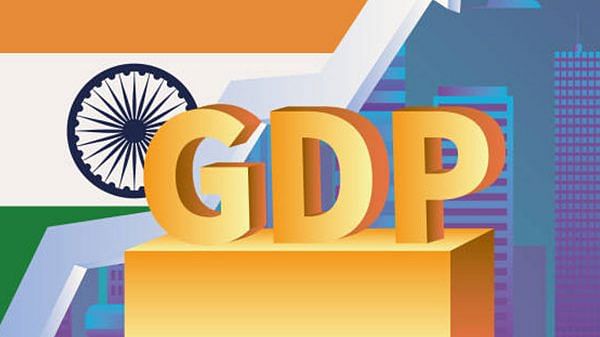Thank you dear subscribers, we are overwhelmed with your response.
Your Turn is a unique section from ThePrint featuring points of view from its subscribers. If you are a subscriber, have a point of view, please send it to us. If not, do subscribe here: https://theprint.in/subscribe/
Quite a few theories are circulating about the slowdown in Indian economy and most of them ring true – falling demand leading to lack of investment in new capacity, sticky inflation etc. etc. The focus of most of the commentators is on the long-term prospects of the economy and thereby of the country.
This write up is not about the falling stock market which is best left to the experts. What is being explored here is the aspirational declaration of the political class that by 2047 the country will join the league of developed countries. Now, this is not to question the likelihood of the country becoming the third largest economy in the next few years as merely the momentum will take us past the fourth largest economy in the course of time.
The real beneficiaries of the past growth are mainly the top ten percent of the population, which is a large number, around 150 million people. This is the segment which drives the demand for aspirational consumption, such as luxury cars, fancy apartments and foreign holidays. ‘Financialization’ of the economy has inflated this bubble and the evidence of this bubble bursting is all around us in the form of rising delinquency in personal loans. The challenge is that most of the future ‘growth’ will also end up in the coffers of the top ten percent. A simple example is that there is a waiting list for BMWs and Merks, whereas car manufacturers are struggling to sell low end cars and two wheelers.
This takes as to the real question: will India grow old before it becomes rich, or at least become an upper middle-income country? Politicians are happy bandying about the demographic dividend, but anyone can see the sense of despair prevailing in the working age population of the country. Barring the privileged few, with good degrees and skill sets or the with the grit and opportunity to set up a business, most young people are voting with their feet. Those who can, are migrating legally or illegally or trying to crack entry exams into the government services and those who can’t do either, are becoming the storm-troopers of the political outfits.
This is a harrowing picture, and it will be unconscionable to analyse this in purely economic terms such as capital-output ratio and factor productivity. It will be also very simplistic to say that the government has to move onto the next stage of economic reforms, because policymaking has to be followed by execution. In any case, what worked as Manmohanomics prescription in the nineties is now dated – all its enablers have changed. An alarming fact is that a sizable section of the populace is outside the conventional growth model, which is what necessitates the doles. A dole economy saps the soul of both the taxpayer and the recipient. Maybe it is time to understand clearly what we mean by “growth”. GDP figures do not address the issue of unequal growth.
Looking past the usual tropes, it becomes apparent that our case is somewhat unique. The biggest obstacle to growth is corruption. Corruption saps the soul of the nation. In our case, it already has! The corruption scandals that hit the front pages are instances of direct and visible corruption, but what really hits us hard is the day to day ‘extortion’ which breaks the back of the ordinary citizen.
There is a larger issue behind this all-pervasive malady and that is we as people have no concept of the rule of the law. We take pride in circumventing any law which gets in the way of our achieving our immediate goals. This is seen everywhere in our daily life, be it traffic violations or extortionist mind-set of the government machinery. One wonders if our policymakers have really thought through this overarching challenge, since the classic prescriptions are unlikely to work in a linear manner, even if the government had the will to put these in practice.
It is obvious that we need governance reforms before we embark on more economic reforms. When a relatively sober CM of a progressive state publicly admits that the extortion mafia is the main obstacle to industrial growth in that state, it becomes a stark example of politics getting in the way of economics. Unless the rulers and the ruled (yes, we are ruled, not governed) learn to respect the rule of law, nothing will take us towards becoming a prosperous nation. And the first question to ask is whether we want to become a civilised nation, since everything depends on the answer. All signs, at least for now, point in the opposite direction.
Time may take care of some of the vestigial challenges – the population growth is levelling off, which also means we may grow old before we grow rich. What we need is a recognition of the civilisational decline in our society which arises out of a complete disregard for the rule of law.
These pieces are being published as they have been received – they have not been edited/fact-checked by ThePrint.


